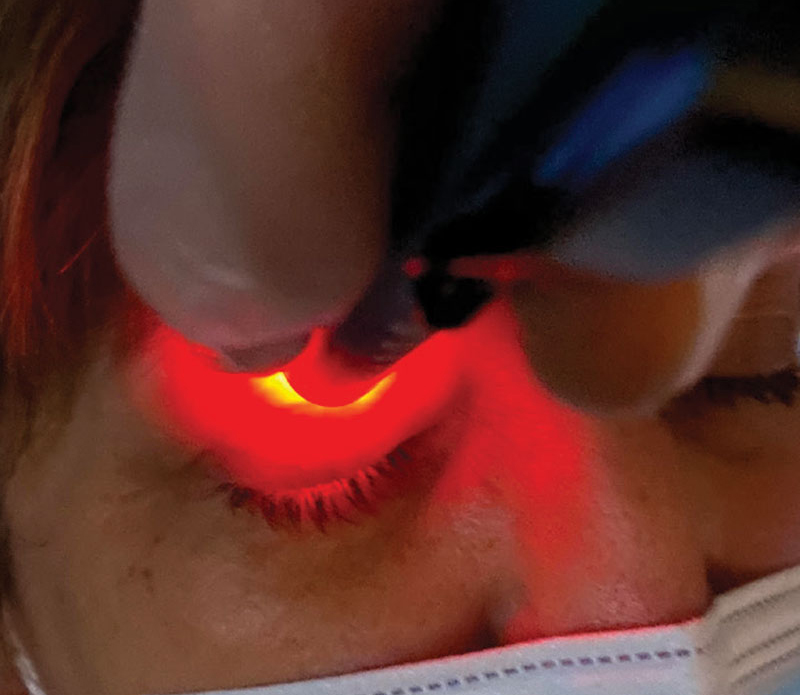 |
| Inadequate lid seal as detected by the Korb-Blackie light test. Common in OSA patients, this exposes the ocular surface during sleep and leads to tear film evaporation. Photo: Paul Karpecki, OD. Click image to enlarge. |
Almost 42% of patients with obstructive sleep apnea (OSA) have significant dry eye problems thought to result from inflammation and subsequent increased tear evaporation, as well as eyelid laxity. Previous studies have reported that patients with floppy eyelids have much lower levels of elastin fiber than healthy individuals, which has been associated with higher concentrations of MMPs in the eyelids. Additionally, hypoxic events lead to ischemia-reperfusion damage and oxidative stress. Researchers recently investigated whether ocular surface alterations were associated with disease severity in patients with OSA-hypopnea syndrome in a recent review paper published in Frontiers in Physiology. They reported that these patients have a greater prevalence of floppy eyelid syndrome than healthy patients.
In the 15-study meta-analysis of patients with OSA, the researchers reported floppy eyelid syndrome and dry eye syndrome prevalence as 40% and 48%, respectively. They noted that Schirmer 1 values and tear breakup time were “remarkably reduced” in OSA patients compared with controls and that OSA patients had elevated OSDI scores, corneal staining scores and meibomian gland loss rates compared with controls. Schirmer 1 value and tear breakup time were also negatively correlated with the apnea-hypopnea index, while OSDI demonstrated a positive association with this index.
Based on their findings, the authors concluded in their review that “patients who have OSA-hypopnea syndrome have a remarkably increased risk of developing floppy eyelid syndrome and dry eye” and that these patients often present with ocular surface alterations. “Early detection and treatment of ocular surface lesions could prevent severe and potentially irreversible ocular surface disease.”
Sun J, He J, Liang Z. Comparison of ocular surface assessment outcomes between healthy controls and patients with obstructive sleep apnea—hypopnea syndrome: a meta-analysis of the literature. Front Physiol. May 5, 2023. [Epub ahead of print]. |

